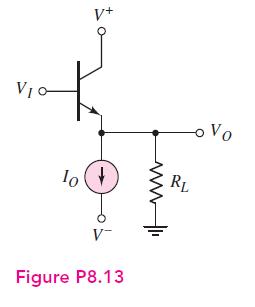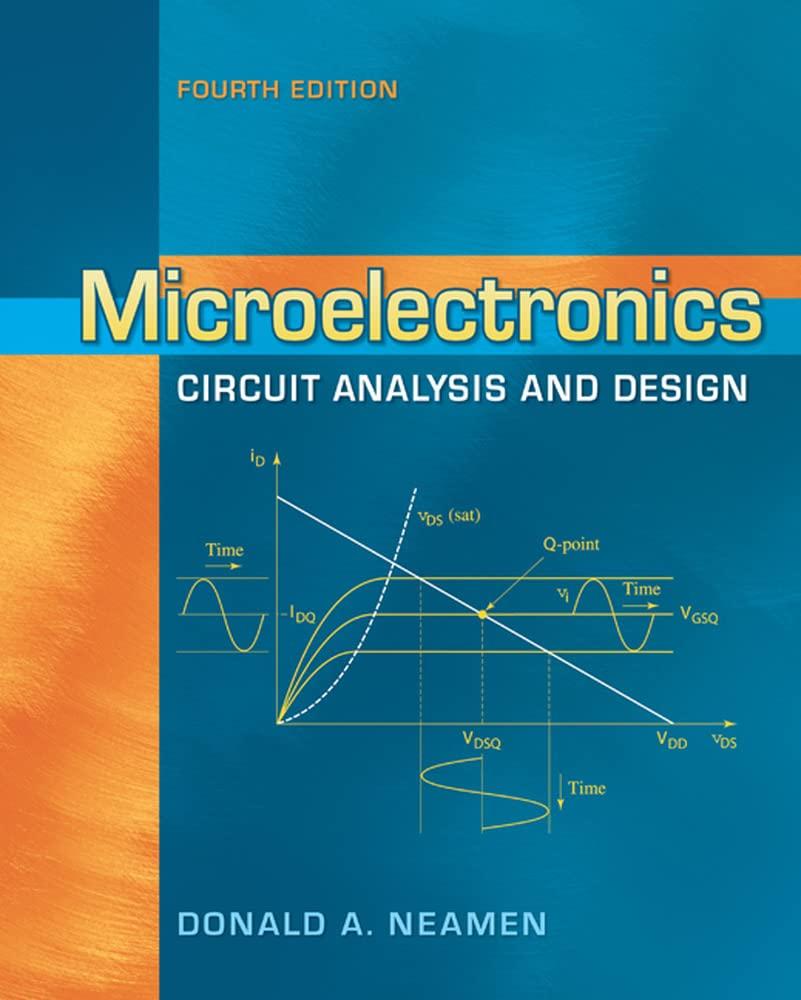Consider the emitter-follower amplifier in Figure P8.13. Since the base-emitter voltage is a function of collector current,
Question:
Consider the emitter-follower amplifier in Figure P8.13. Since the base-emitter voltage is a function of collector current, the voltage gain changes as the collector current changes. This effect results in distortion of the output signal. Assume \(R_{L}=8 \Omega\) and \(I_{O}=0.25\) A. Defining the voltage gain as (Problem 8.13)
\(A_{v}=\frac{R_{L}}{R_{L}+\frac{1}{g_{m}}}\)
find the voltage gain for
(a) \(V_{O}=+1.6 \mathrm{~V}\),
(b) \(V_{O}=0\), and
(c) \(V_{O}=-1.6 \mathrm{~V}\).
Data From Problem 8.13:-
Consider the emitter-follower amplifier shown in Figure P8.13.
• Assuming \(\beta \gg 1\), show that the small-signal voltage gain can be written in the form \(A_{v}=\frac{I_{C} R_{L}}{I_{C} R_{L}+V_{T}}=\frac{R_{L}}{R_{L}+\frac{1}{g_{m}}}\)
• If \(R_{L}=8 \Omega\), determine the minimum collector current that produces a small-signal voltage gain of (i) \(A_{v}=0.9\), (ii) \(A_{v}=0.95\), and (iii) \(A_{v}=0.9970\).

Step by Step Answer:

Microelectronics Circuit Analysis And Design
ISBN: 9780071289474
4th Edition
Authors: Donald A. Neamen





